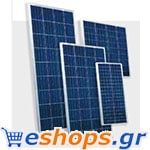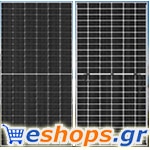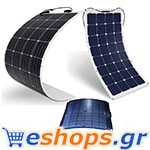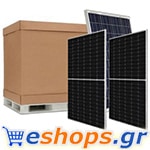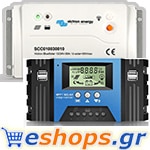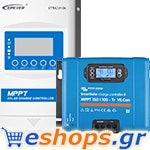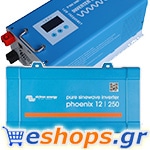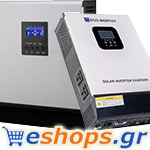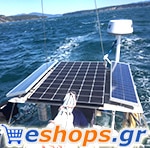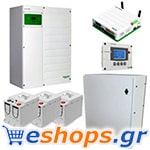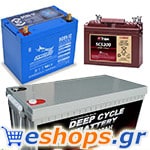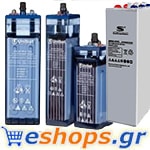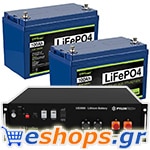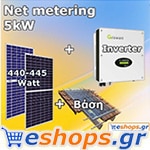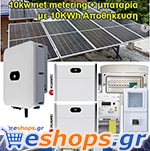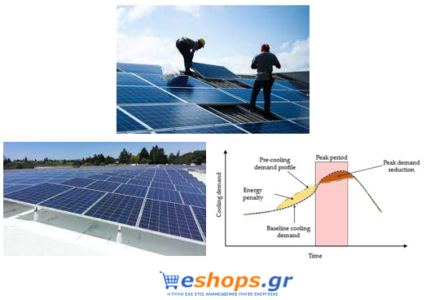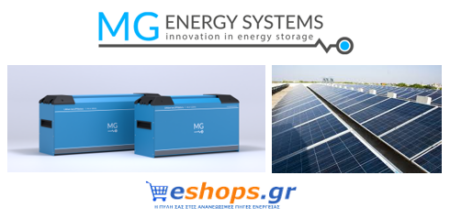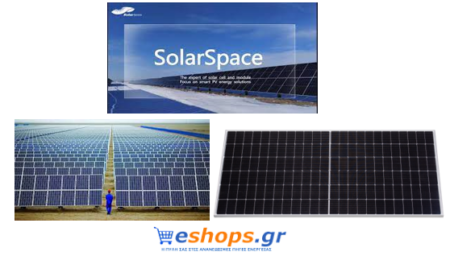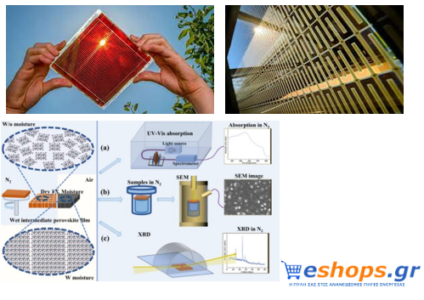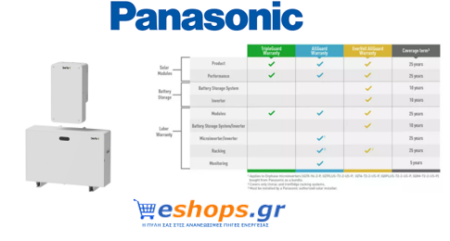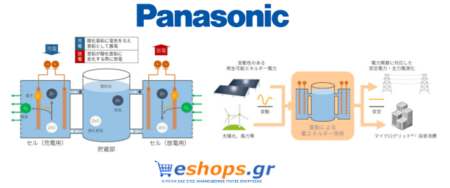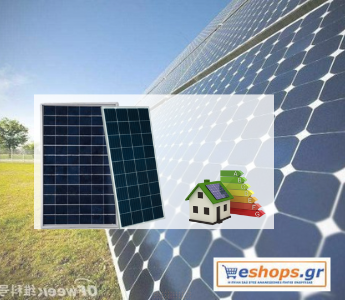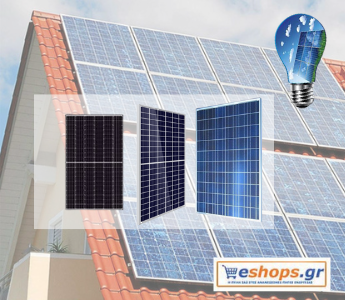Solar panels
The solar panels are electrical interconnection units that consist of many photovoltaic cells that have the ability to convert sunlight into electricity.
The conversion of solar energy into electricity is done quietly, reliably and without environmental effects
.
A Photovoltaics consists of at least one panel of photovoltaic cells, in combination with the appropriate devices for the conversion of direct current produced in alternating current. A cell (or cell or cell) is a device that generates electricity when it receives radiation. The photovoltaic panel is essentially a frame containing these cells connected to each other.
All frames contain silicon and depending on the processing and construction, are divided into the following categories:
Categories of photovoltaic panels:
Monocrystalline photovoltaic panels:

Character:
-It is the first type of photovoltaic panels that went into mass production.
-They have a better performance / surface ratio than other types of panels. Although the new generation Polycrystalline silicon with new advanced cells are approaching similar yields
-Their energy efficiency ranges from 11% - 19%
-They have higher production costs compared to polycrystalline panels.
-They have a greater thickness of material.
-They are dark blue or black.
Polycrystalline photovoltaic panels:
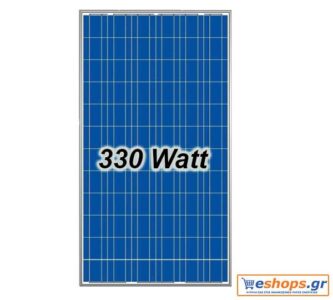
Character:
-Their production method is cheaper than that of monocrystals, which is why their price is usually a little lower.
-Their energy efficiency that varies for the new generation polycrystalline frames is almost similar to that of monocrystalline. From the moment the cells are placed inside a panel with another 60, the actual difference in watts per square meter is negligible. Today, with the rapid development of technology, their performance tends to reach the performance of monocrystals.
-They are the most widespread panels in the world.
-They have the best cost-performance ratio.
-They have better behavior in cloudy or shading
- They have a blue color
Thin film photovoltaic panels:
This is a broader category, which includes the so-called "third generation" panels that come from many different production and processing methods (eg amorphous silicon (a-Si), copper bis-filament (CuInSe2 or CIS), cadmium telluride (CdTe) , French Arsenic (GaAs) etc). Amorphous silicon panels, which are the most common in this category, consist of thin-film strips which are produced by depositing semiconductor material (silicon in our case) on a support substrate, low cost such as glass or aluminum. The designation amorphous photovoltaic comes from the random way in which silicon atoms are arranged (photo 6).
Character:
-They have, nominally, lower yields compared to the other categories (6% to 11%).
-Due to the smaller amount of silicon used in their production, their price is significantly lower.
-Perform better at high temperatures.
-The thin film panels have better performances than the crystal photovoltaics, when there is diffuse radiation (cloudy).
-They have low energy density which means that to produce the same energy we need almost twice the surface area compared to crystalline photovoltaic cells.
-There are no data from old installations, regarding their performance and duration, since their technology is relatively new.
-They are a good solution when they exist: large available space, shading, unfavorable orientation.
Solar Cell Type Efficiency-Degree Advantages Disadvantages of photovoltaic panels
Monocrystalline solar panels (Mono-SI) ~ 20% High efficiency. optimized for commercial use. high lifespan Expensive
Polycrystalline solar panels (p-Si) ~ 18% -20% lower price better performance in cloudy
Thin film: Amorphous silicon Photovoltaic panels (A-SI) ~ 7-10% Relatively low cost. easy to produce and flexible lower warranties & lifetime.
Concentrated Photocells (CVP) ~ 41% Very high efficiency and efficiency percentage Requires solar tracker & cooling system (to achieve high efficiency) Get the quotes now!
How to categorize the different types of solar photovoltaic panels
Different types solar photovoltaic collectors serve different needs and purposes. For a quick and general overview, refer to our ultimate solar panel guide, for a detailed description of the different types of solar panels, keep reading.
Since sunlight can be used differently, either on Earth or in space, the fact that location itself is an important factor when it comes to choosing one type of solar panel over another.
Distinguishing between different types of solar panels often means differentiating between single-phase and multi-phase solar panels - or first, second or third generation. Single links and multiple crossovers differ in the number of layers in the solar panel that will observe sunlight, while the classification by generation focuses on the materials and efficiency of the different types of solar panels.
First generation solar photovoltaic panels
These are the traditional types of solar panels made from monocrystalline silicon or polysilicon and are commonly used in the conventional environment.
Monocrystalline solar panels (Mono-SI)
Mono-crystalline solar panels (Mono-SI) This type of solar panels (made of monocrystalline silicon) is the purest. You can easily recognize them by their uniform dark appearance and rounded edges. The high purity of silicon causes one of the highest yield rates, as these young ones reach over 20%.
Monocrystalline panels have high output power, take up less space and last longer. Of course, this also means that it is the most expensive of the bundle. Another advantage to consider is that they tend to be affected slightly less by high temperatures compared to polycrystalline plates.
Polycrystalline Solar Photovoltaic Panels (Poly-SI) Polycrystalline Solar Photovoltaic Panels (p-SI)
You can quickly spot these boards because this type of solar panel is square, its corners are not cut, and it has a blue, speckled look. It is made by smelting raw silicon, which is a faster and cheaper process than that used for monocrystalline panels.
This leads to a lower final price but also to a corresponding return (approximately 17% -19%). However, the differences between mono- and polycrystalline types of solar panels are not so significant and the choice largely depends on your particular situation. The first option offers slightly higher space efficiency at a slightly higher price, but the power outputs are basically the same.
2nd generation Solar Photovoltaic panels
These cells are different types of thin film solar cells and are mainly used for photovoltaic stations, integrated in buildings or smaller solar systems.
Thin Solar Cells (TFSC)
Thin Solar Cells (TFSC)
If you are looking for a less expensive option, you may want to look into thin film. Solar film photovoltaic panels are made by placing one or more films of photovoltaic material (such as silicon, cadmium or copper) on a substrate. These types of solar panels are the easiest to produce and their economies of scale make them cheaper than the alternatives due to the less material required for their production.
They are also flexible - opening up many opportunities for alternative applications - and are less affected by high temperatures. The bottom line is that they take up a lot of space, making them generally unsuitable for home installations. In addition, they have the smallest guarantees, because their lifespan is shorter than the monocrystalline and polycrystalline type of solar panels. However, it can be a good choice to choose between different types of solar panels where space is available.
Amorphous silicon solar cell (A-Si)
Ever used a solar powered pocket calculator? Yes? Then you have definitely seen these types of solar panels before. The amorphous silicon solar cell is among the various types of solar panels used mainly in such pocket computers. This type of solar panel uses a triple technology, which is the best of a variety of thin films.
Just to give a brief impression of what "thin" means, in this case, we are talking about a thickness of 1 micrometer (one million meters). With a yield of only 7%, these cells are less efficient than those of crystalline silicon - which have a yield of about 18% - but the advantage is that A-Si-Cells have a relatively low cost.
3nd generation Solar Photovoltaic panels
Third-generation solar panels include a variety of thin-film technologies, but most of them are still in the research or development stage. Some of them generate electricity using organic materials, others use inorganic substances (for example CdTe).
Biohybrid Solar Cell
The Biohybrid solar cell is one of the types of solar panels still in the research phase. It was discovered by a team of experts at Vanderbilt University. The idea behind the new technology is to take advantage of photosystem 1 and thus mimic the natural process of photosynthesis. If you want to know more about how the bio-hybrid solar cell works in detail, read more about it in the American Journal of Optics and Photonics. Explains in more detail how these cells work. Many of the materials used in this cell are similar to traditional methods, but only by combining the multiple layers of photosystem 1, the conversion from chemical to electrical energy becomes much more efficient (up to 1000 times more efficient than types 1 generation solar panels).
Telluride Furnace Solar Cell (CdTe)
Among the collection of different types of solar panels, this photovoltaic technique uses cadmium telluride, which makes it possible to produce solar cells at a relatively low cost and therefore shorter repayment time (less than one year). Of all the solar technologies, this is the one that requires the least amount of water for production. Given the low energy payback time, CdTe solar cells will keep the carbon footprint as low as possible. The only disadvantage of using Cadmium Telluride is that it is toxic when inhaled or inhaled. In Europe in particular, this is one of the biggest obstacles to be overcome, as many people are very concerned about the use of technology behind this type of solar panel.
Concentrated photocells (CVP and HCVP)
Concentrated photovoltaic cells generate electricity just like conventional photovoltaic systems. These types of multi-junction solar panels have an efficiency of up to 41%, which, among all photovoltaic systems, is the highest to date.
Monocrystalline and polycrystalline solar panels: what you need to know
When evaluating solar panels for your photovoltaic (PV) system, you will come across two main categories of panel options: monocrystalline solar panels (mono) and polycrystalline solar panels (poly). Both types of panels produce energy from the sun, but there are some key differences to be aware of.
Monocrystalline solar panels and polycrystalline solar panels: all about solar cells - cells
Both monocrystalline and polycrystalline solar panels serve the same function in the overall solar photovoltaic system: they capture energy from the sun and convert it into electricity. Both are made of silicon, which is used for solar panels because it is an abundant, very durable element. Many solar panel manufacturers produce monocrystalline and polycrystalline panels.
Both monocrystalline and polycrystalline solar panels can be good choices for your home, but there are key differences between the two types of technology that you need to understand before making your final solar purchasing decision. The main difference between the two technologies is the type of silicon solar cell they use: monocrystalline solar panels have solar cells made of a single silicon crystal, while polycrystalline solar panels have solar cells made of several silicon fragments that melt together. More information…
See the basic categories in photovoltaics
12v Photovoltaic Panels
Flexible-Semi-flexible PV panel
24v Photovoltaic Panels
Wholesale Photovoltaics
Photovoltaic Panel Packages
